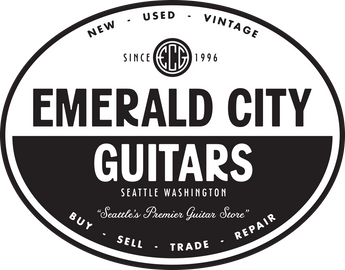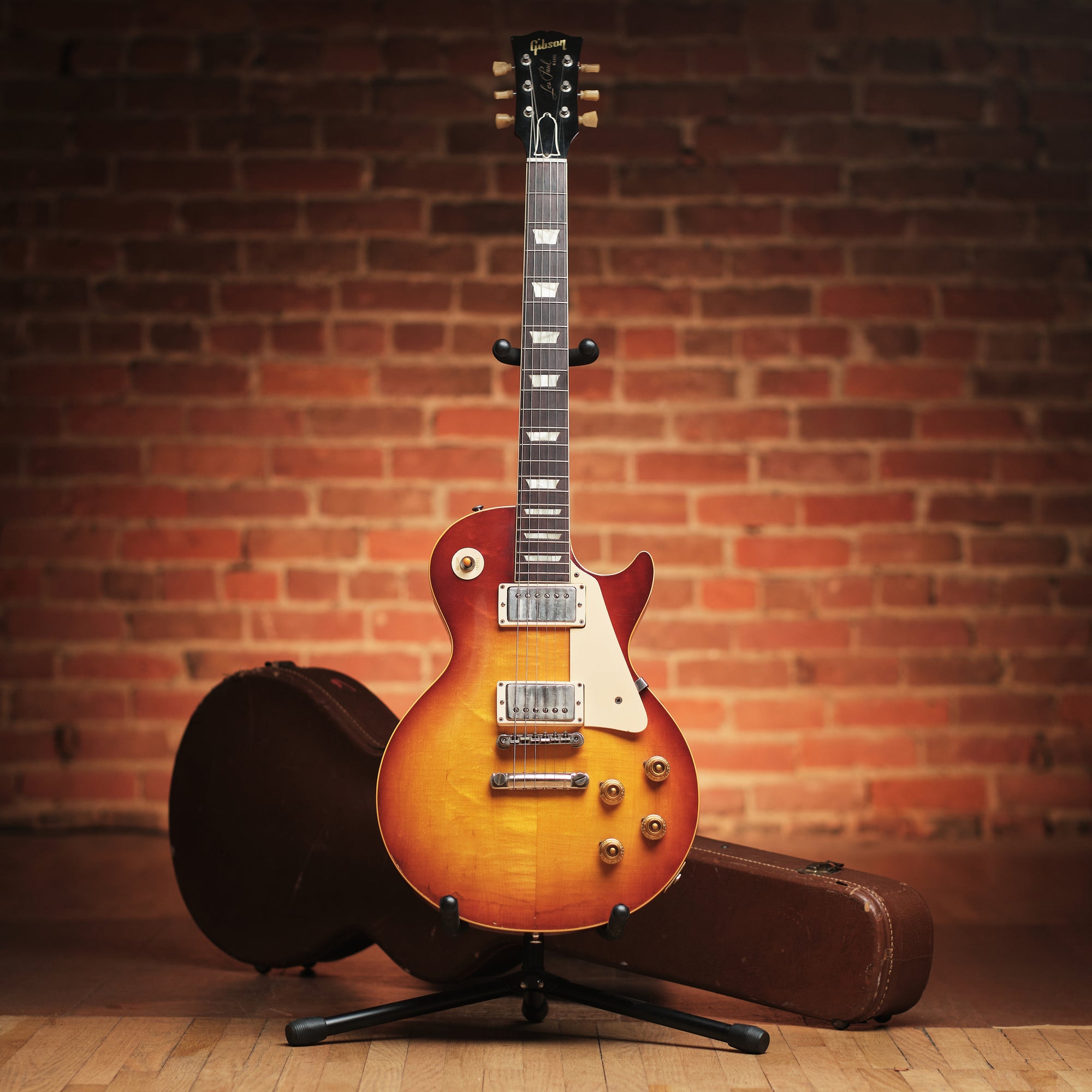1959 Gibson ES-345

If Ted McCarty was the father of Gibson’s golden age, the ES-345 was his quintessential middle child. It lacked the big-money prestige of the 355 and the undeniable cool factor of the 335. It was Jan Brady with a rotary switch. As with most middle children, though, the 345’s plight has been greatly exaggerated.
The model’s mandatory stereo output is inconvenient for most, sure, but can be converted to mono with a relatively painless outpatient procedure. (This original example remains un-snipped) Apart from this minor difference, you’re looking at a Mickey Mouse-eared 335 with long-magnet PAFs and fancier inlays. The ’59 neck is the exact profile that necessitated tens of thousands of reissues. The Varitone is surprisingly usable, and can be bypassed without any sort of tonal sacrifice. With so many of these 345s having been modified or converted to mono, this original example is truly a rare treat. And available for a fraction of the price of its plainer brother.
1984 Zemaitis Metal-Front

In 1942, a chemist’s failed attempt to develop an optically clear plastic resulted in the unintentional invention of Super Glue. Similarly, 1970 saw Tony Zemaitis set out to develop a metal top guitar that would eliminate pickup noise, but instead became one of the most memorable guitar designs in rock and roll history.
Tony’s Rolodex of clients was as impressive as any: Jimi Hendrix, Keith Richards, Ronnie Wood, Joe Walsh, and Richie Sambora just to name a few. To call Zemaitis a custom shop wouldn’t quite do it justice, given the term’s gratuitous and indiscriminate use as of late. Prior to his death in 2002, Zemaitis famously refused to ever build two guitars exactly the same, and insisted upon limiting his own production to only 10 guitars per year to maintain quality. Unfortunately Tony’s death brought an end to these exacting standards, at which point the Zemaitis name was sold to the highest bidder and production moved to a factory overseas. This is a rare opportunity to own an original piece of musical folk art, a guitar that launched a thousand offshore ripoffs.
"Eva" Pickups - ECG Exclusive

A tremendous excess of gifted inventors and engineers have come before us in the field of electric instrument development. The number of design innovations that have been conceived, built, tested, and forgotten is unfathomable, and studying this history as best we can is an important step in the advancement of our craft. I think it is inevitable, though, that a point will be reached in our creative process when a cursory knowledge of tradition ceases to guide us and instead acts as a prison.
Even more, it can be extremely difficult to recognize when one reaches this point. What an exciting prospect it would be, then, to once again have the ability attack our technical challenges with a blank slate, minds uncluttered by years of learned biases. This is the exact environment from which Eva pickups were conceived.
Designed from a strictly technical point of view, the Z pickup bears no real resemblance to any traditional pickup we’ve ever seen. Even the idea of winding wire onto a bobbin was reimagined. Eva winds these coils into open space, doing all the delicate shaping, tensioning, and linen wrapping 100% by hand. The resulting free coil is then arranged with the magnet into a Z shaped offset, presenting each component to the strings in an orientation completely unique. Each cover is also cast and painted one at a time, making each pickup a one-of-one original.
Writing about tone can be tricky, but the sound from the neck position is evidently clear and airy. A general buoyancy is present throughout the guitar’s full range, but still carries a totally unfiltered quality. As you can imagine, the handmade nature of these pickups doesn’t lend itself to mass production, so availability is extremely limited. They’ve already garnered a cult following within the Los Angeles studio crowd, finding their way into the hands of ace players like Mason Stoops and Harrison Whitford. We were lucky enough to acquire a couple sets to sell, but they definitely won’t be around for long.


*Limited stock available - Contact us for your set of "Eva" Pickups!
1963 Fender Bass VI Shoreline Gold

A metallic gold finish on a guitar can go one of two ways: it either exudes class or looks like a dumpster on fire. Luckily, Fender’s Shoreline Gold always strikes us more like Champagne than it does Coors Light. And on a Bass VI? A more distinguished combination is hard to imagine.
By far the most expensive bass in Fender’s catalog, even the top of the line Jazzmaster cost just a few dollars more. Considering Shoreline Gold was one of Fender’s rarest custom colors at the time and the Bass VI one of its rarest models, its safe to say there aren’t many in this configuration out there. From a player’s standpoint, the Bass VI is a true delight. Using pickups that were essentially pulled straight from a Jaguar, these basses possess a clarity and note separation that its 4-string cousins can sometimes fail to deliver. Whether you’re playing in a local wedding band or you have a residency in Vegas, this is the perfect bass for all occasions.
1966 Fender Stratocaster Lake Placid Blue

Fender’s pre-CBS era receives no shortage of hype, and rightfully so. But at Fender, like at any company, major changes generally were not made very quickly nor implemented overnight. This latency gifted us with a truly delightful period of transitional features for the mid-60s Stratocaster.
Built before CBS could fully wring the last drop of efficiency from Fender’s labor-intensive process, the company’s materials and craftsmanship were still covered in Leo’s fingerprints; even the majority of the workforce had been around since the maple board era. The large headstock and gray bobbin pickups may startle purists, but this guitar couldn’t be further from the poly-dipped duds that are so wrongly associated with those features. This particular example is factory finished in beautiful Lake Placid Blue, still absolutely vibrant and unaffected by the excessive clear coat yellowing that can sometimes turn this blue into more of a sludgy green. A professional refret and bone nut make this otherwise original example a dream for players and collectors alike.



